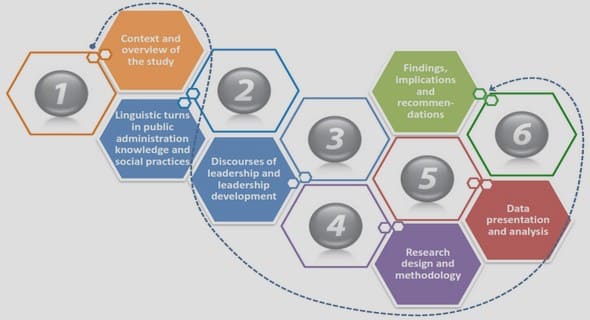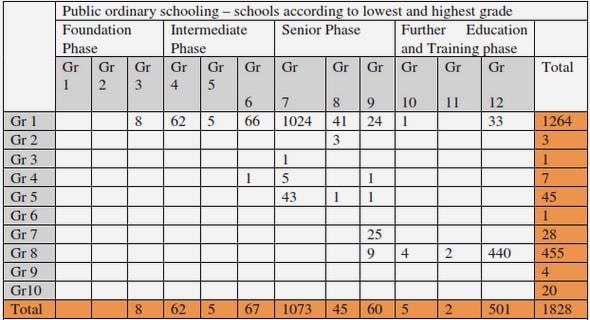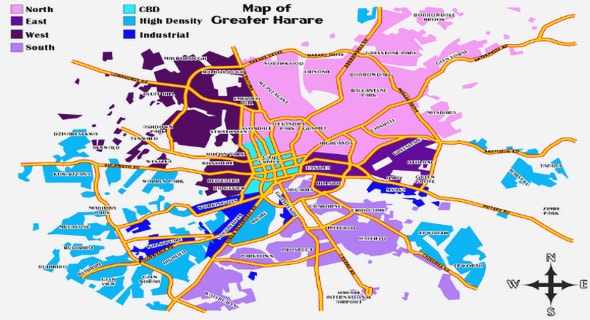Get Complete Project Material File(s) Now! »
Fuzzy propositions
Let a = (X, U, Ta) be a linguistic variable. When the available knowledge about the variable X is precise and certain, the statements that characterize X take the form X = u where u ∈ U. When the available knowledge about X is imprecise or uncertain, we use a fuzzy proposition of the form “X is A”, where A ∈ Ta is a linguistic term of a. Two different semantics can be associated to a fuzzy proposition “X is A” [100]:
• Statements of the form “X is A is possible” are modeled by: ∀u ∈ U, δX (u) ≥ µA(u).
where δX is a guaranteed possibility distribution for the variable X. Such a statement “X is A is possible” indicates that the values in A are possible to some extent. If δX (u) = 1 then X = u is a real situation, while δX (u) = 0 means that no evidence for X = u has been collected.
• Statements of the form “X must be in A” are modeled by: ∀u ∈ U, πX (u) ≤ µA(u).
where πX is a possibility distribution for the variable X. Such a state-ment represents a constraint i.e., a fuzzy restriction on a set of possible situations: if µA(u) = 0 then X = u is an excluded value because πX (u) = 0.
Fuzzy logic expressions
Fuzzy logic expressions that use the logical connectors “and”, “or” and “not” can be formed from fuzzy propositions of different linguistic variables, such as “X is A and Y is B”. Given two linguistic variables a = (X, Ua, Ta) and b = (Y, Ub, Tb) with A ∈ Ta, ia ∈ Ua , B ∈ Tb and ib ∈ Ub, we compute the truth value of fuzzy logic expressions as follows:
• The truth value of “X is A and Y is B” is T (µA(ia), µB(ib)), where T is a t-norm.
• The truth value of “X is A or Y is B” is S(µA(ia), µB(ib)), where S is the t-conorm associated to T .
• The truth value of “X is not A” is N(µA(ia)), where N is the negation adapted to T and S.
In this thesis, we use the t-norm min and the t-conorm max, which are related by the usual negation t : 1−t. From the above definitions, one can construct fuzzy rules of the form “if p then q”, where p is a premise and q a conclusion, that we remind in the following.
Fuzzy rules
Fuzzy rules are often advocated as the basic unit of fuzzy logic-based systems [48, 100]. As we will see first in the case of a crisp rule in classical logic, a fuzzy rule is underlying positive or negative information [52, 67]. This basic inter-pretation leads to distinguish two distinct classes of fuzzy rules: conjunctive fuzzy rules and implicative fuzzy rules.
Negative and positive information
In [52], Dubois, Prade and Ughetto distinguish between the negative and pos-itive information underlying a rule. This distinction was also revisited by [67]. A crisp rule in classical logic is of the form “if X is A then Z is O” where A ⊆ U and O ⊆ V are subsets of the domain of the variable X and Z respec-tively, links the two universes of discourse U and V by their local restrictions A and O. One can interpret such a rule from two different points of view, depending on whether one focuses on its examples or its counterexamples:
• Positive view: the rule is viewed as a condition of the form “if X is A then Z can be O” and asserts that when X takes its value in A, then any value in O is eligible for Z. The pairs (u, v) ∈ A × O form a set of examples explicitly allowed by the rule. This view is the conjunctive interpretation of the rule, emphasizing only its examples.
• Negative view: the rule is interpreted as a constraint of the form “if X is A then Z must be O” and asserts in an implicitly negative way that the values outside O are excluded when X takes its values in A. The pairs (u, v) ∈ A × O form the set of counterexamples of the rule and are explicitly forbidden by the rule, while the pairs of the set A × O form the set of implicitly allowed pairs of values for (X, Z). As we have: A×O=(A×V)∪(U ×O)=(A×V)∪(A×O).
the set A × O (which will be noted A ∪ O in the sequel), is the disjoint union of the set of examples A × O and the set A × V of pairs of values uncommitted by the rule. This view is the implicative interpretation of the rule, emphasizing only its counterexamples (the set A × O) and clearly corresponds to the Boolean implication in classical logic.
In conclusion, the complete representation of the rule is the pair of graphs, (A × O, A ∪ O ) i.e, subsets of the cartesian product U × V , made of explicitly and implicitly permitted values (u, v) (Figure 1.2). In Figure 1.2 (a), A × O represents the examples of the rule, while values outside this set are considered impossible by default [52]. In Figure 1.2 (b), A ∪ O represents the counterex-amples of the rule and the values outside this set are considered as possible by default [52].
Relations between Bi and Mi
We can recover the matrix Mi from the matrix Bi in an explicit way and vice versa. Remind that the size of Bi and the size of Mi are respectively equal to (2i, i) and (2i, 2i). Let k be an integer in {1, 2, . . . , 2i}. Denote by Nk = t1 · · · tj · · · t2i−1 t2i with tj ∈ {1, r∗, s∗} and Lk = γ1 γ2 · · · γi with γ ∈ {α, β}, the corresponding rows of Mi and Bi respectively. For any j = 1, 2, . . . , i, we have: (t2j − 1 , t2j) = (sj , 1) if γj = αj and γj = αj if (t2j−1, t2j) = (sj , 1) . (1, rj) if γj = βj βj if (t2j − 1, t2j) = (1, rj).
In this reasoning, we ignore the particular expression that the parameters αj, βj can have: αj = max(sj, λj) and βj = max(rj, ρj). All the above claims can be easily proved by recurrence on i = 1, 2, . . . .
Relation between Bi and the partition
For k ∈ {1, 2, . . . , 2i}, let Lk = γ1 γ2 · · · γi be any row of the matrix Bi with γ ∈ {α, β}. Then the corresponding set Ek(i) of the partition is equal to: (i) = T1 ∩ ···∩ Ti with Tj = Qj if γj = αj (3.3) Ek T2 if γj = βj . Qj As it is clear for i = 1, this result is deduced from the description of the rows of Bi by the rows of Bi−1, see (3.2).
Table of contents :
A Explainable Artificial Intelligence
1 Background
1.1 Possibility Theory
1.2 Fuzzy Set Theory and Fuzzy logic
1.3 Conceptual graphs
1.4 Conclusion
2 Explainability of rule-based systems
2.1 Explainability of classical expert systems
2.2 Explainability of a fuzzy rule-based system composed of possibility rules
2.3 Min-max equation system for a possibilistic rule-based system
2.4 Conclusion
B Possibilistic interface between learning and reasoning
3 Generalized min-max equation system for a possibilistic rulebased system
3.1 Generalized equation system
3.2 Equation system properties
3.3 Possibility and necessity measures of any subset of the output attribute domain
3.4 Cascade
3.5 Conclusion
C Justification of the inference results of fuzzy and possibilistic rule-based systems
4 Justification of possibilistic rule-based system inference results
4.1 Notations
4.2 How to get π∗ b(x)(u) strictly greater or lower than a chosen τ ∈ [0, 1]?
4.3 Justify the possibility degree π∗ b(x)(u) = τ
4.4 Extraction of premises justifying π∗ b(x)(u) = τ
4.5 Premise reduction functions
4.6 Justification and unexpectedness of π∗ b(x)(u)
4.7 Example
4.8 Conclusion
5 Justification of fuzzy rule-based system inference results
5.1 Semantics of the total inferred conclusion of a Mamdani rulebased system
5.2 Justifying an inferred conclusion of a Mamdani fuzzy inference system
5.3 Premise reduction functions
5.4 Justification and unexpectedness of a conclusion (Z,Oj)
5.5 Conclusion
D Representation of explanations of fuzzy and possibilistic rule-based system inference decisions
6 A framework for the representation of explanations
6.1 Vocabulary
6.2 Graphs of the representation
6.3 Representation of an explanation
6.4 Example
6.5 Conclusion
7 Representation of explanations of possibilistic inference decisions
7.1 Possibilistic conceptual graphs
7.2 Possibilistic explanation query
7.3 Vocabulary construction
7.4 Conceptual graphs based on the vocabulary VE
7.5 Representation of the combination of the justification and the unexpectedness
7.6 Examples
7.7 Conclusion
8 Representation of explanations of fuzzy inference decisions
8.1 Fuzzy conceptual graphs
8.2 Fuzzy explanation query
8.3 Vocabulary construction
8.4 Conceptual graphs based on the vocabulary VE
8.5 Representation of the combination of the justification and the unexpectedness
8.6 Examples
8.7 Conclusion
Conclusion
Appendices
A Publications
A.1 International Peer-Reviewed Conferences
A.2 National Peer-Reviewed Conferences
B Programs
Bibliography


